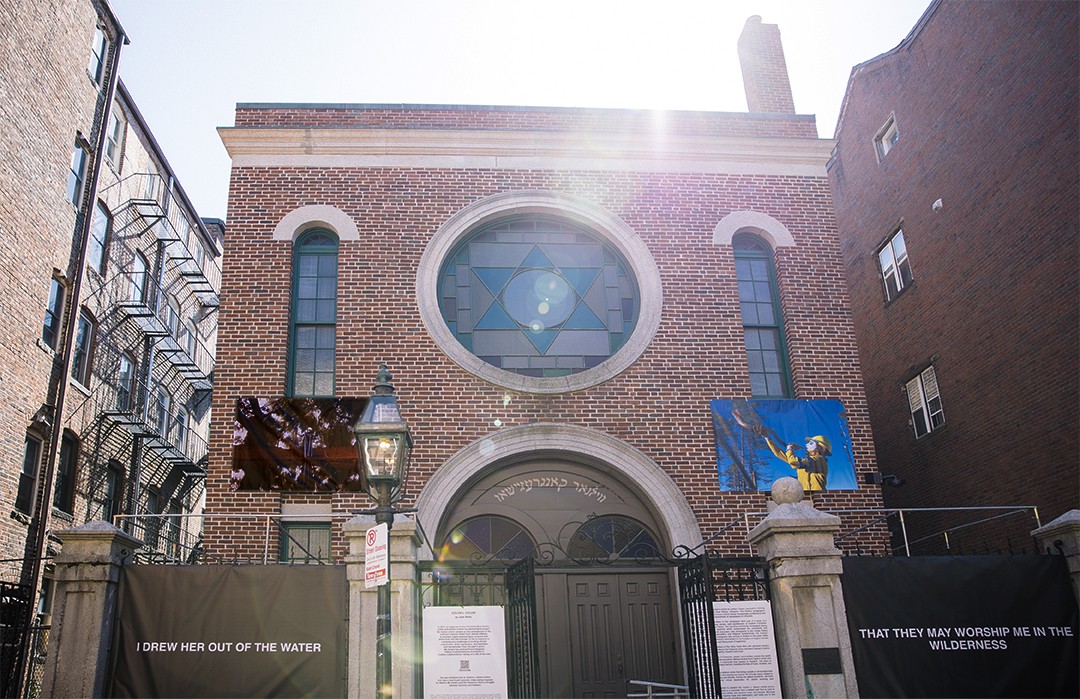Over the past 4 years, My Golem has evolved from Instagram videos to performances at protests to creative collaborations- taking on a life of her own. Golem v. Golem is a new 8-part episodic video series inspired by the Passover story’s struggle between tyranny and freedom. Through the series, Weitz re-examines her multi-year project exploring My Golem’s creation story, her activism, and how the character has been received and (mis)-interpreted by different audiences in various contexts. Weitz’s journey through her previous work as both creator and creation requires retelling and reframing her past, and ultimately questioning her connection to God. The videos weave the themes of Passover throughout the dialogue and question the possibility of both psychological and spiritual liberation within all of us.
Episode 1: “An Introduction”
The artist introduces the story of her golem, and explores its connections to the story of Passover.
Episode 2: “Out of the Water”
The artist recounts the historical legend of the golem, and how she drew on this legend to create her own golem in response to the rise of white supremacy and anti-Semitism in America.
Episode 3: “The Great House”
The artist explores how the Passover story’s characters of Pharaoh and Moses symbolize opposing aspects of enslavement and liberation. She proposes not only that she and her golem symbolize these contradictory identities—but that they exist within each of us.
Episode 4: “Who Made You Ruler?
The artist takes responsibility for her golem’s reckless behavior as The Great Dominatrix, where she embodied an anti-Semitic trope. She explains how a deadly shooting at a Pittsburg synagogue drove her to redirect her golem towards justice.
Episode 5: “Here I am”
The golem guides the artist into a meditative state to recall the golem’s mournful journey into the desert following the synagogue shooting. A holy presence reignites the artist’s memory, awakening her to the sacred work that her golem has called her to do.
Episode 6: “Strangers in the Land”
The artist reflects on her golem’s participation in protests supporting immigrants’ rights. She also grossly underestimates her golem’s response to anti-Jewish trolling online.
Episode 7: “Pharaoh’s Hardened Heart”
The artist searches for her golem, who has left the set of Golem v. Golem in anger. In her search, she reflects upon the differences between herself and her golem, and recognizes the problem of her own whiteness and assimilation into a dominant white culture.
Episode 8: “Let My Golem Go”
The artist and her golem reunite, and symbolically become one.
Golem v. Golem was a digital project designed for Instagram, and included an unfolding narrative with one episode available each day of the holiday, as well as supporting posts, stories, and a companion literary collaboration, “What We Talk About When We Talk to the Golem,” by Moriel Rothman-Zecher. Weitz has created this project in collaboration with Director, D.S. Chun of Rug and Vase alongside Director of Photography, Mustafa Zeno, Sound Recordist Cameron Gibson, and Costume Designer Jill Spector.
Golem v. Golem by Julie Weitz is produced by Asylum Arts, made possible with the generous support of CANVAS. The project is presented at the Vilna Shul, Boston’s Center for Jewish Culture in partnership with the Jewish Arts Collaborative. A companion literary collaboration, “What We Talk About When We Talk to the Golem,” by Moriel Rothman-Zecher, is produced by Jewish Book Council. Additional digital partners include the Contemporary Jewish Museum in San Francisco, Jewish Museum Milwaukee and the Jewish Museum of Florida-FIU. The work is part of a North American project – Dwelling in a Time of Plagues – a coast-to-coast Jewish artistic response to contemporary plagues. To see the other works on display, visit plaguedwelling.com.
Click here to read Moriel Rothman-Zecher’s ‘What We Talk About When We Talk About the Golem.‘

Golem v. Golem Credits:
Media Coverage:



